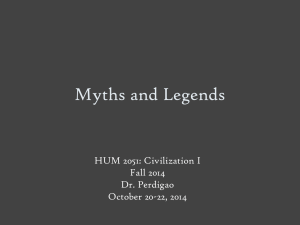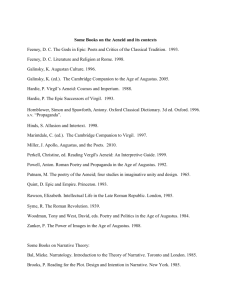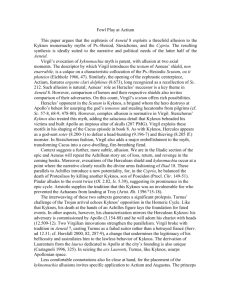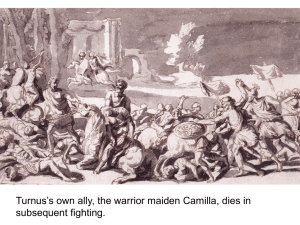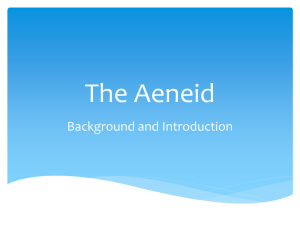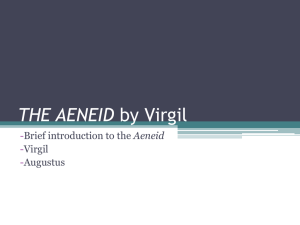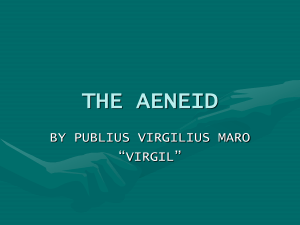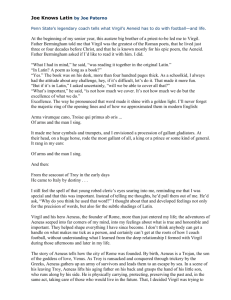The Aeneid
advertisement
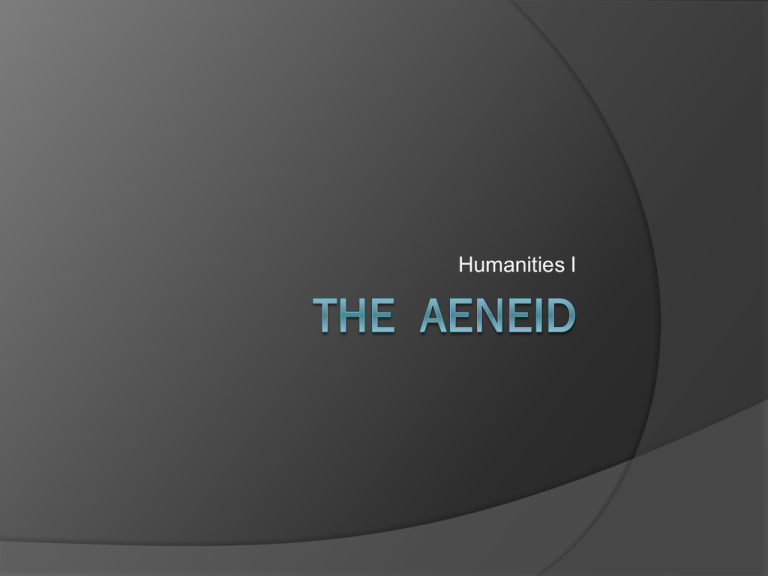
Humanities I Overview of The Aeneid Author: Virgil A paramount poet of the Roman Empire Known by many as the BEST poet of his time Born: 70 BC Lived during the height of the Roman Empire, under the reign of Augustus He witnessed much turmoil that was taking place in Rome, and this greatly affected the way he viewed the world, his life, and ultimately, it affected his writings. His name derives from the Latin word, virga, which means “wand”. This reflects the belief that many of that time held—a poet is a great magician, capable of conjuring dead spirits through his writing. Reason for Writing The Aeneid Augustus pressed Virgil to write the epic in order to illustrate the glory of Rome due to his leadership. Although Virgil was proud that Augustus believed he could accomplish the task, he was never really happy about it. To Virgil, this task was a duty he had no choice but to perform. Virgil and Augustus traveled together to Italy, and after contracting a terrible fever, Virgil died in 19 BC. Some say that Virgil had requested his executer, Varius, to destroy the masterpiece, feeling as though it was incomplete and needed further editing. Although this has not been proved, many suspect that Augustus refused to allow this, and the epic was published against Virgil’s wishes. Virgil spent 11 years working on this manuscript, and although many consider him to be a highly successful poet, many modern critics accuse him of borrowing heavily from Homer, author of The Iliad and The Odyssey. Summary of The Aeneid The Aeneid tells the story of Aeneas, a Trojan hero, and his journey to Italy following the Trojan War. Remember: In The Iliad, Poseidon rescues Aeneas from a battle with Achilles, declaring that Aeneas WILL survive the Trojan War and become a strong leader. There were many accounts of Aeneas that existed during the time of Virgil’s writing the epic. His perilous journey was featured in artwork as well as in other, smaller works of literature. These accounts were scattered, however, and Virgil is credited with putting them all together into one, complete work. It is important to remember that the accounts in the epic are based upon Roman Legend. Summary of The Aeneid The Trojans are fleeing from Troy, which has been destroyed by the Greeks. Aeneas tells many truths about the loss of King Priam, his wife, amongst others. They are traveling to Italy, stopping along the way and meeting many others, including a love interest for Aeneas. Curses are placed upon the crew, and they are met with many successes and failures along their journey. With the constant interference of the gods and goddesses, Aeneas and his people face many hardships, and their courage is challenged. When they finally arrive in Italy, they do so peacefully. Yet, fate has another plan, and Aeneas is once again challenged, both mentally and physically, to save the future of his people. Key Points to Know Genre: Heroic Epic Type of Work: Epic Poem Hence, you will see many of the epic conventions we have become so familiar with Narrator: Virgil for majority of epic; Aeneas will provide his own insight Point of View: Virgil – 3rd Person Omniscient; Aeneas – 1st Person Tone: honoring Rome, yet sympathetic to the suffering of the Trojans Setting (time): aftermath of Trojan War, 1000BC Setting (place): The Mediterranean, north coast of Asia Minor, Italy, and Carthage.
